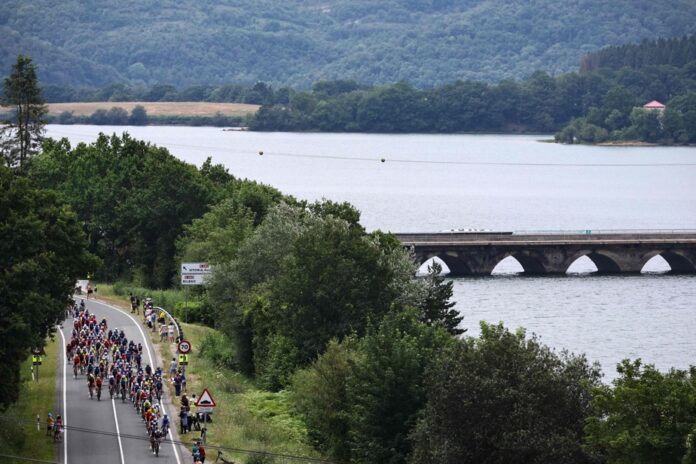(San Sebastian and Eibar) A young surfer, barefoot and board under his arm, was the first person I met when I came out of an underground area near Plaça Catalunya. Scents of cannabis confirmed that the Tour de France had deployed its yellow device in a younger and more trendy seaside resort for the arrival of the second stage.
First stop in a lively restaurant close to the line, where the two giant screens broadcast the race. I quickly regretted my soft-boiled burger, seasoned with a sunny-side-up egg, when I saw the grilled octopus tentacle land on the next table.
Before the serious things, a short jump to La Concha beach, where I was able to soak my feet in the Bay of Biscay. Those who know that I lost my cell phone in the Pacific during my first swim in Costa Rica will not be surprised to read that my laptop bag almost went through it in the first wave here…
In my defense, I was probably distracted by Spanish architecture, between tradition and avant-garde, like this Kursaal palace, which hosted the press room just a stone’s throw from the line.
Olivia Baril taught me that San Sebastian has been rebuilt many times due to wars and fires, the last in 1813.
“The most beautiful city in the world!” wrote me the cyclist from Rouyn-Noranda, who has lived there since 2020. It is difficult to contradict her.
To her great regret, the representative of the UAE team missed this first passage of the Tour since 1992. She returned to Canada to compete in the national championships in Edmonton, where she won the silver medal at the road race and time trial a week ago.
I thought of her when I booked a hotel room in Eibar, conveniently located on the road to Amorebieta-Etxano, the starting town for the third stage. Baril signed his two professional victories there at the Gran Premio Ciudad de Eibar, the last on May 28.
I imagined a nice little village with its surrounding mountains. Instead, I landed in another dimension.
Eibar seems to have grown in the hollow of a deep ravine. No wonder Baril is a climber, like everything in the Basque Country for cyclists.
We descend there with muffled steps, with a hint of apprehension, on a road that winds along the escarpments and their buttresses. I wrote on a restaurant terrace in the middle of the main square, where a small river sometimes runs underground.
After 10 p.m., it was still a bit light. 4-5 year olds with Barcelona shirts on their backs were kicking a soccer ball.
The Basque Country for Dummies, my new bible, teaches me that Eibar was famous for its arms industry in the Middle Ages. I’m going to think about that at night, listening to the river flow. Tomorrow, we return to France.















